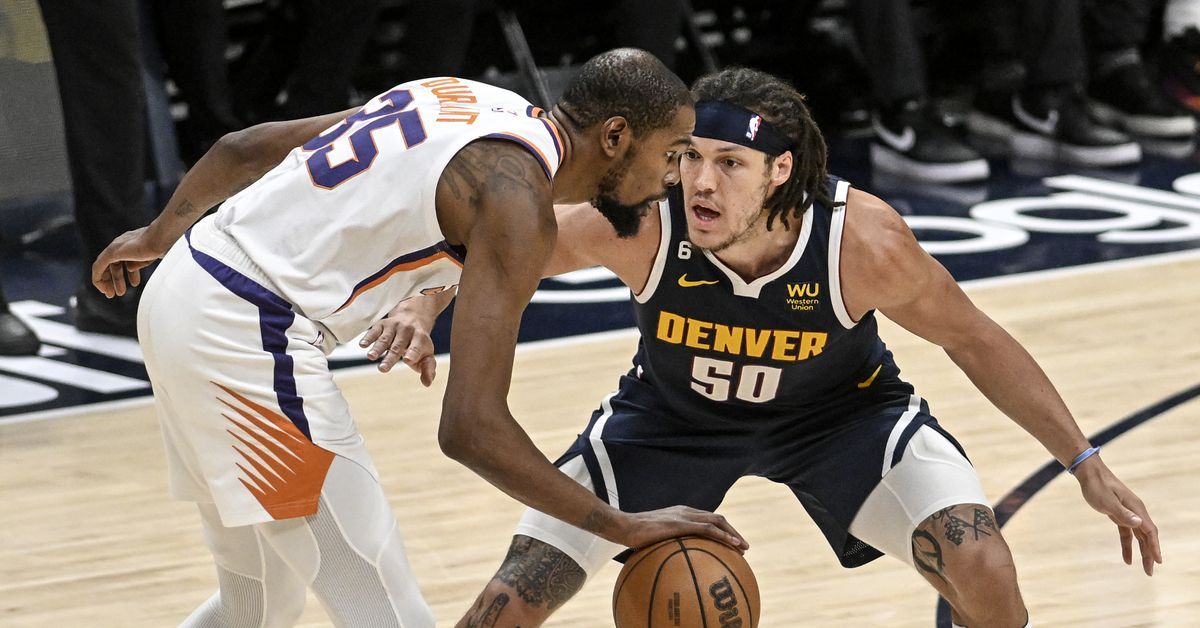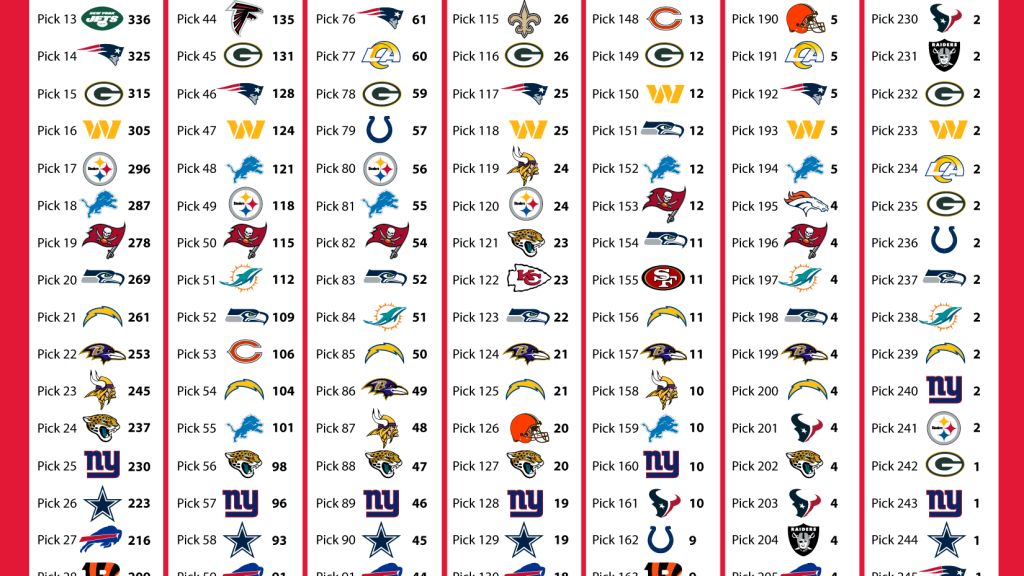How the Nuggets are shutting down the Suns’ star-studded offense
Late in the third quarter of Monday’s Game 2 between the Phoenix Suns and Denver Nuggets, Devin Booker and Nikola Jokic delighted viewers by closing the period trading a slew of invigorating buckets. After both sides slogged through a 42-40 first half, they each established some rhythm in the third, combining for 61 points as Booker and Jokic starred. In the fourth, though, with Phoenix entering the frame leading 73-70, it was the Nuggets’ defense that closed out their Game 2 victory for a 2-0 series lead.
Phoenix didn’t score until the 8:09 mark of the quarter and had just eight points with fewer than two minutes remaining. The Suns ended with 14 points in the fourth and had watched a three-point edge devolve into a 10-point loss. Since Denver become a mainstay in the conversation out West, largely coinciding with Nikola Jokic’s rise to MVP-level dominance, its defense has rightfully been under considerable scrutiny.
Despite some lengthy stretches of feisty, cohesive defense this regular season, that scrutiny didn’t subside when the Nuggets finished 17th in defensive rating. Through seven playoff games, however, particularly these first two against the Suns, their defense has generally looked rather excellent. During the regular season, they posted a 114.6 defensive rating (0.5 points better than league average). In the playoffs, that mark is down to a shiny 108.1 (5.3 points better than league average this postseason). In the second round, they’ve held Phoenix to 102.2 points per 100 possessions.
When the Suns acquired Kevin Durant, the quartet of him, Devin Booker, Chris Paul and Deandre Ayton were supposed to converge for a prosperous offense as the basis of the franchise’s championship aspirations. That prosperous offense (123.6 offensive rating) drove their first-round, 4-1 win over the Los Angeles Clippers. To begin the Western Conference Semifinals, that prosperous offense has been banished from the Mile High City’s Ball Arena. It’s a combination of Denver’s game-plan and execution, and some seriously cumbersome decisions and options for Phoenix.
While Paul once served as the team’s primary offensive conductor, those responsibilities have shifted to Booker and, in this series, Durant. When those two operate on the ball, whether it be pick-and-rolls, dribble handoffs, mismatch-hunting or isolations, the Nuggets are sending two defenders their direction and loading brazen gap help in driving or passing lanes virtually every single time.
Similarly, they’ve done well to frustrate Durant’s handle. For a 7-footer, his handle is astronomically good. Through the lens of a primary engine, it’s susceptible to curtailing creation endeavors and preventing him from turning the corner. Between pressure at the point-of-attack and strong-side help off of shooters Denver deems unthreatening, he’s played on his heels a lot whenever he’s commandeering the offense, which is altering passing windows and timely decision-making. His nine turnovers (seven in Game 1) through two games help illuminate that. Many plays look like this. Elbows and driving lanes are a traffic jam. Traps have bothered him. Aaron Gordon and Christian Braun are excelling.
I presume the Anyone Besides Durant Or Booker strategy stems from a few angles. The Suns’ depth and floor-spacing from their complementary players is quite tenuous. Durant and Booker are All-World scorers who Denver would prefer do not dictate the majority of possessions. The Nuggets do not trust the precision of their playmaking to exploit the thin margins and opportunities that gap help presents. Thus far, they’ve nailed all three components.
They’re content playing off of Paul, Torrey Craig, Josh Okogie, Damion Lee, Landry Shamet and Cameron Payne to funnel possessions away from the stars. Lee might be the only ancillary rotation player who’s staunchly shot ready as a spot-up guy and he’s 1-of-7 from deep to open the series after burying 44.5 percent of his regular season jacks. Maybe Shamet, but he was excised in Game 2 after defensive foibles in Game 1 and parlayed a possible catch-and-shoot triple into a brutal turnover during one of his stints. When they do receive chances, they’re largely squandering the advantage borne from doubles on Durant and Booker.
If those stars wait out double-teams or Jokic backpedaling from the level of the screen, it’s succeeded by lot of arduous shot-making. Durant and Booker are brilliant players, so it hasn’t been disastrous for their individual production, but they’re letting a lot of potential 4-on-3 scenarios evaporate as a result. While patiently letting 1-on-1 coverage resurface might be the ideal approach, given the limited supporting cast, the approach itself is certainly not leading to routinely fruitful offensive trips.
Advantages are not being capitalized upon, maintained or extended very often. The Nuggets aren’t in rotation much. It’s a stark contrast to their first-round defeat against the Golden State Warriors last spring, granted the defensive personnel on the perimeter is jarringly different. They deserves loads of credit for the execution of this defensive gambit. The Suns are also culpable for some of their own demise.
If that didn’t satisfy your palette, here, have another helping of the Nuggets’ suddenly frenzied defensive unit.
Whereas Denver is up high against Durant and Booker, it’s employing traditional drop coverage against Paul, which I read as both a testament to his passing prowess and indictment of his individual scoring capacity these days. They’ll concede midrange pull-ups to him, as they have, so as long as he’s not feeding Ayton inside or priming Durant and Booker to pierce closeouts off the catch.
The Suns did engineer some ways to get their stars ripping off the catch in Game 2, which led to some beneficial plays — figuring out paths to lather up the offense and tilt the defense is critical for Phoenix. This staggered screen action, and staggered screen actions as a whole, fared pretty well in Game 2. Other empty corner sets with Booker one pass away enabled him to operate downhill and find quality looks, too.
Some of them, though, do rely on Paul’s availability and he’s out for at least a week after suffering a groin injury in the second half of Game 2. Depending on the personnel for each club, Denver adapted its coverage on these actions in a few manners. If possible, it stashed Jokic on a non-shooter away from the play and switched the screens to negate the requirement for a low man rotation and long closeout back to Booker or Durant. When Phoenix has swung the ball to shooters who warrant genuine closeouts, it’s produced good possession; those have been scarce, though, and that’s a massive part of the hang-up offensively.
If Jokic had to still be directly involved, he wasn’t quite as aggressive at the level of screen in an aim to deter passes to Ayton on the roll and ease the low man’s stress. If the Suns pick up on the latter tactic and identify space for Durant or Booker pull-up three, the defender in the strong corner could cheat off a poor shooter to help until the point-of-attack defender recovers. Both teams deployed numerous shifts in Game 2 and I’m fascinated to see how the push-pull of this specific wrinkle further progresses because the Suns did unearth a slight pressure point in Denver’s otherwise stingy defense.
Broadly speaking, Phoenix is corned into constantly making concessions with its lineups. That’s the crux of its 0-2 deficit. After Okogie bungled a couple short-roll possessions in Game 2’s fourth quarter, Cameron Payne replaced him and the Nuggets almost immediately targeted him in a ball-screen, where Jamal Murray scored. Okogie’s burly point-of-attack chops fill a need, yet his offensive shortcomings hamstrings many possessions. With Paul now sidelined, Payne’s secondary ball-handling to potentially help Durant and Booker function against a scrambling defense fills a need. But his defense and prompt off-ball scoring are worries. Run down the list of players beyond Durant and Booker, even Paul and Ayton included to an extent, and there’s always some sort of “yeah, but” caveat in their candidacy for significant minutes.
The Nuggets’ defensive triumphs pop on tape. This group is flying around, exacerbating the issues of a talented, albeit flawed, shallow, opponent and performing as well as it has all season. The 102.2 defensive rating reinforces that. Other data points from the start of this series yield a similarly logical conclusion.
Denver isn’t fouling — its .112 opposing free-throw rate is 8.1 points below the playoff average. The Nuggets aren’t allowing second chances — their 23.4 percent opposing offensive rebounding rate is 4.7 points below the playoff average. They’re amplifying Phoenix’s shot profile tendencies to coax 51.4 percent of the Suns’ field goals from midrange, where they’re shooting 45.6 percent on a steady diet of contested attempts. .912 points per shot on something composing more than half of a team’s field goals is quite the hurdle to overcome toward efficient offensive output.
The Suns aren’t getting to the charity stripe. They’re not nabbing offensive rebounds. They’re ending the majority of their possessions with a shot that’s not worked in their favor the first two games. The Nuggets’ burgeoning defense is the culprit of all those concerning developments.
Source: SB Nation


